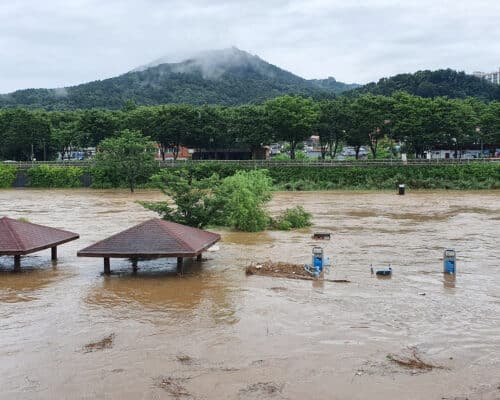South Korea Puts ‘Green New Deal’ at Center of COVID-19 Pandemic Recovery Plan
South Korea has put Green New Deal policies at the center of the country’s recovery and development plan in the post-COVID era, which is expected to accelerate its transition from the current carbon-intensive economy toward a more sustainable and environmentally-friendly one.
The government unveiled the outline of the Korean-style ‘New Deal’ on 1 June, after the 6th Emergency Economic Council meeting, during which President Moon Jae-in and his cabinet members discussed economic policies for the second half of the year amid the COVID19 pandemic.
The 160 trillion won ($132.67 billion) spending plan erect two pillars – a Digital New Deal and Green New Deal, with 3 phases in five years to come _ by the end of the year; by 2022, when the president’s term ends; and lastly by 2025, with each period having different focuses.
The government will make an investment of around 67.7 trillion won by 2022 (6.3 trillion won by the end of this year) with the goal to create 887,000 jobs, while the rest 92.3 trillion won will continue to be spent between 2023 and 2025 by the next government.
Getting the plan on track
To put the plan on track, the government first aimed to have a 35 trillion won supplementary budget proposal, the single-largest supplementary budget ever in history, passed at the newly-opened National Assembly on 4th July. As an instant remedy in the second half of the year, the government is expected to first focus on measures to strengthen employment security and support severely-affected businesses and individuals.
According to the Korean government’s announcement in July, but just for the Green New Deal, the government plans to invest a total of 32.5 trillion won between 2020~2022, with the aim to create 319,000 new jobs in “green” sectors by end-2022.
Its main architecture consists of three areas:
- Green transformation of living infrastructure
- Construction of ecosystem for green industries
- Expansion of low-carbon and decentralized energy
With 6.1 trillion won, 3.2 trillion won, and 10.3 trillion won of government expenditure allocated, respectively. But experts say that the Green New Deal should involve detailed long-term plans as well as reform of related policies if the government wants to make it successful.
“The Green New Deal should include a long-term plan and policy reforms which would help not only boost the economy but also bring social transition. This needs public consensus,” said Chang-hoon Lee, vice-president of Korea Environment Institute. “It is also a strategy for climate crisis, and economic and social crisis, which is interactional with climate crisis, should be also considered.”
Calls for greater ambition
Civic groups also argue that the Green New Deal should include more ambitious plans, such as an agreement to rule out coal finance overseas, which was included in the ruling Democratic Party’s Green New Deal manifesto, ahead of the general election on 15 April.
Understanding such concerns, lawmakers from the governing party plan to push forward the legislation of a climate law.
“To tackle the climate crisis, overseas and domestic coal power is not different,” newly-elected, first-time lawmaker Lee So-young from the party said. “I think the investment in overseas coal projects through public funds by Korea’s state-owned financial institutions including KEXIM should be stopped immediately.”
“So, I believe depending on the effort by politicians and civil communities, public financiers will soon be highly likely to announce a partial or entire end to coal financing. I will make the utmost effort to make it happen as soon as possible.”



